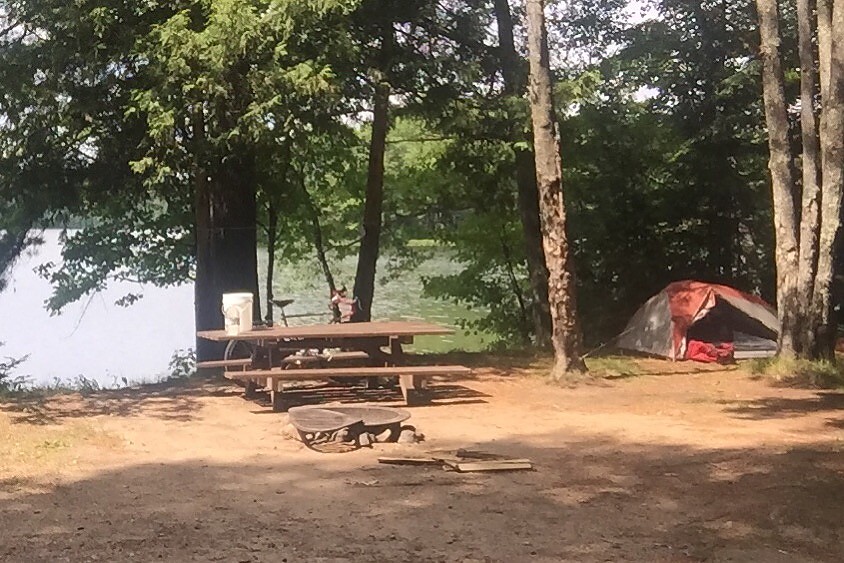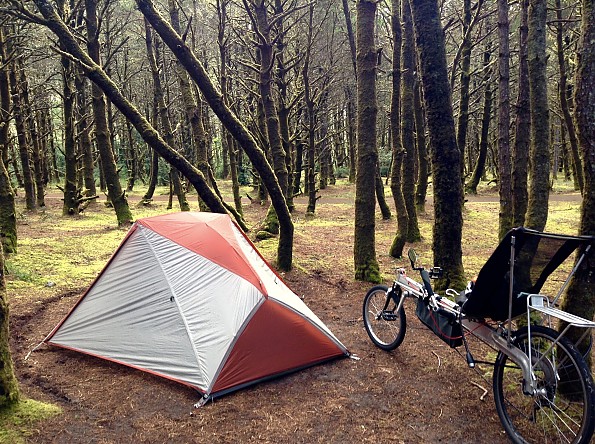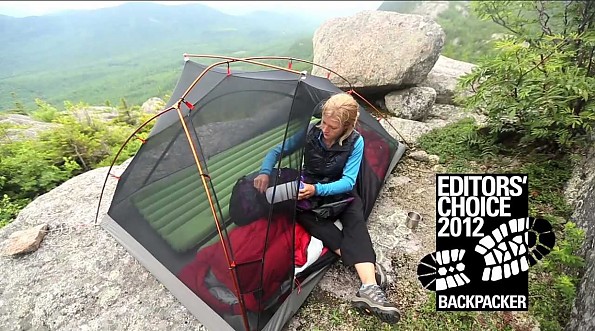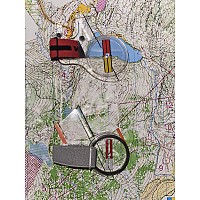L.L.Bean Microlight FS 2

Lightweight—at a cost.
Pros
- Sturdy pole design
- Versatile ventilation options
- Large vestibules
- Fairly robust snag-free zippers
- Seems very large inside with all mesh body and twin vestibules
Cons
- Condensation
- Long reach to unzip fly from inside the tent
- Wet floor
- Rain splashing into tent
- Velcro tabs come unglued
- Disposable tent pegs—useless
If you look at my profile, you’ll see that my three reviews prior to this one have all been 5 stars. You might assume that I lack objectivity in reviewing the things that I purchase. Well, in my old age I’ve learned to research more carefully than I had in the past.
I thought I’d done my diligence before purchasing this L.L. Bean Microlight FS 2 tent. I liked that it was very versatile in the various configurations for ventilating the tent. One could spend comfortable sleep in extremely warm environments. It was awarded “Editor’s Choice” by Backpacker in 2012.
At a bit under 4 pounds, this tent is light and bears a striking resemblance to the more current L.L. Bean Microlight UL 2. The tent features a mesh body supported by an aluminum pole framework with hubs and a cross member, which when staked out is surprisingly rigid. The rainfly is siliconized and sheds water very well. I’ve been through quite a few rainy nights and the fly never leaked.
The floor, however, is a very lightweight material that always had moisture leaching through. It’s hard for me to believe it had a coating of any kind. The tent fly falls short in extending beyond the tent fore and aft far enough to prevent rain splash from getting between the footprint and tent floor, and also enables rain to splash up under the fly onto the mesh tent body and into the tent.
I posted a review of this tent on the L.L. Bean website and it was removed by them after a time. Hmmm... I did phone L.L. Bean customer service to address the wet floor issue. The rep said, “You really need to have a footprint with this tent.” I had been using a PU coated nylon tarp under this tent, but acquiesced and purchased the footprint expressly made for the Microlight FS 2. So much for the 3 lbs 13 oz tent weight. Adding 8 oz of footprint brings the weight up to 4 lbs 5 oz. Now it weighs MORE than my Hilleberg Anjan that doesn’t require a footprint. ...and the floor still got wet.
The fly also features bat wings on the sides which provide ample vestibule spaces for the two side doors. From inside, the tent seems quite large because of this feature combined with the all-mesh body. The tent dimensions inside would be snug for two. Spooning required there. When inside the tent, unzipping the doors and the fly requires quite a reach on both counts.
Condensation was an ever-present issue with this tent. Exiting always had the wet underside of the fly sliding across my back in the mornings. Not an ideal way to start the day. I believe the tent would benefit by a footprint that extended into the vestibules to help prevent condensation from the wet ground. During my Oct/Nov backpacking trip on the North Country Trail in Michigan’s Upper Peninsula, I got used to packing a soaked rainfly in a separate bag outside of my pack.
The rainfly has three guy out points: one aft and two forward, that did a decent job of stabilizing the tent—for a while. There were corresponding velcro tabs beneath the fly at each guy out, which attached to the aluminum frame. These tabs were merely glued to the fly and came off eventually.
The last time I used this tent was the summer of 2019 in the Nicolet Chequamegon National Forest of Northern Wisconsin. It rained and the tent floor got wet—again. Enough is enough. I donated the tent to the local thrift store. I believe a tent’s first job is to protect me from the elements. Achieving a lightweight design at the expense of a coated floor compromised that in this tent.
My Hilleberg Anjan 2 weighs less than the Microlight FS 2 (with the necessary footprint) and protects from the elements the way this Microlight tent was supposed to.
Background
I’ve used this tent backpacking the North Country Trail, various shorter camping trips, and bicycle touring the Oregon Coast.
Source: bought it new
Price Paid: $179








